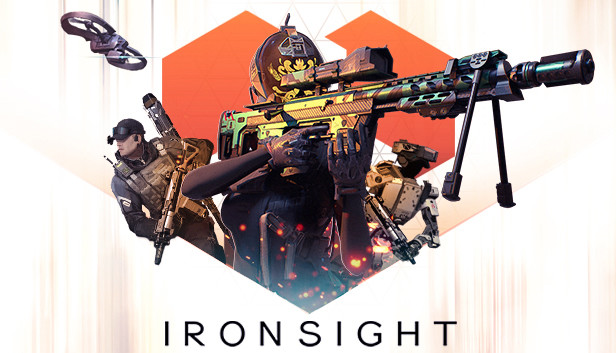Steam's Access Woes: A Digital Dilemma for Russian Gamers
November 1, 2024, 9:58 pm

Location: United States, California, San Francisco
Employees: 501-1000
Founded date: 2011
Total raised: $215M

Location: United States, Washington, Bellevue
Employees: 501-1000
Founded date: 1996
On November 1, 2024, Russian gamers found themselves in a digital quagmire. Access to the popular gaming platform Steam was suddenly disrupted. Users across Russia reported issues that left them unable to load the site or update their games. The frustration was palpable. For over 12 hours, players struggled to connect, feeling like sailors lost at sea without a compass.
Despite the chaos, the Russian communications watchdog, Roskomnadzor, stepped in to clarify the situation. They assured the public that there were no restrictions on Steam. The platform remained open, yet the problems persisted. Users who switched their language settings to English found a lifeline. The site sprang back to life, as if waking from a deep slumber. But why did this happen?
Experts quickly pointed fingers at the Content Delivery Network (CDN) servers, particularly Fastly. These servers are the backbone of online platforms, delivering content to users based on their geographical location. When everything works smoothly, it’s like a well-oiled machine. But when something goes awry, chaos ensues.
The issue stemmed from a specific file, store.css, which had multiple language versions. This file was distributed across three major services: Cloudflare, Akamai, and Fastly. While users connected to Cloudflare and Akamai enjoyed seamless access, those routed through Fastly faced a digital blockade. It was as if a dam had burst, flooding some areas while leaving others dry.
The root of the problem lay in the Fastly servers, particularly one located in Frankfurt. Users in Central and Eastern Europe, including Russia, experienced timeouts when trying to access the Russian, Ukrainian, and Turkish language versions of the site. The servers simply didn’t respond. It was a frustrating game of hide and seek, with players left waiting for a connection that never came.
Meanwhile, Valve, the company behind Steam, remained silent. They did not comment on the issue, leaving users in the dark. The lack of communication only added to the frustration. Gamers are a passionate bunch, and when their favorite platform goes dark, the outcry is loud.
In the background, Roskomnadzor was monitoring the situation. They had previously warned that they would not hesitate to block platforms that failed to comply with Russian laws. However, they confirmed that Steam was not on their radar for restrictions. The platform had been proactive in removing prohibited content, demonstrating a willingness to cooperate. This was a glimmer of hope for users who feared a permanent blackout.
As the hours dragged on, the gaming community buzzed with speculation. Was this a technical glitch, or something more sinister? The switch to English provided a temporary fix, but it was not a permanent solution. Users were left wondering if they would have to navigate this linguistic labyrinth every time they wanted to play.
The situation highlighted a larger issue in the digital landscape. The reliance on CDN services means that a single point of failure can disrupt access for thousands. It’s a reminder that in the interconnected world of the internet, a single thread can unravel the entire tapestry.
For gamers, the stakes are high. Access to platforms like Steam is not just about playing games; it’s about community, competition, and connection. When that access is threatened, it feels like a storm brewing on the horizon. The excitement of gaming can quickly turn to frustration when faced with technical difficulties.
As the day wore on, users continued to voice their concerns online. Social media became a sounding board for their frustrations. Memes and jokes circulated, but beneath the humor lay a sense of unease. The gaming community is resilient, but they also demand accountability. They want answers, and they want solutions.
In the end, the incident serves as a cautionary tale. It underscores the importance of robust infrastructure and transparent communication. As technology continues to evolve, so too must the systems that support it. Gamers deserve a reliable platform, one that can weather the storms of technical difficulties without leaving them stranded.
As the dust settles, one thing is clear: the digital landscape is fraught with challenges. For Russian gamers, the hope is that Steam will emerge from this ordeal stronger and more reliable. The gaming world is a vast ocean, and players need a sturdy ship to navigate its waters. With a little luck and a lot of cooperation, they may just find their way back to smooth sailing.
Despite the chaos, the Russian communications watchdog, Roskomnadzor, stepped in to clarify the situation. They assured the public that there were no restrictions on Steam. The platform remained open, yet the problems persisted. Users who switched their language settings to English found a lifeline. The site sprang back to life, as if waking from a deep slumber. But why did this happen?
Experts quickly pointed fingers at the Content Delivery Network (CDN) servers, particularly Fastly. These servers are the backbone of online platforms, delivering content to users based on their geographical location. When everything works smoothly, it’s like a well-oiled machine. But when something goes awry, chaos ensues.
The issue stemmed from a specific file, store.css, which had multiple language versions. This file was distributed across three major services: Cloudflare, Akamai, and Fastly. While users connected to Cloudflare and Akamai enjoyed seamless access, those routed through Fastly faced a digital blockade. It was as if a dam had burst, flooding some areas while leaving others dry.
The root of the problem lay in the Fastly servers, particularly one located in Frankfurt. Users in Central and Eastern Europe, including Russia, experienced timeouts when trying to access the Russian, Ukrainian, and Turkish language versions of the site. The servers simply didn’t respond. It was a frustrating game of hide and seek, with players left waiting for a connection that never came.
Meanwhile, Valve, the company behind Steam, remained silent. They did not comment on the issue, leaving users in the dark. The lack of communication only added to the frustration. Gamers are a passionate bunch, and when their favorite platform goes dark, the outcry is loud.
In the background, Roskomnadzor was monitoring the situation. They had previously warned that they would not hesitate to block platforms that failed to comply with Russian laws. However, they confirmed that Steam was not on their radar for restrictions. The platform had been proactive in removing prohibited content, demonstrating a willingness to cooperate. This was a glimmer of hope for users who feared a permanent blackout.
As the hours dragged on, the gaming community buzzed with speculation. Was this a technical glitch, or something more sinister? The switch to English provided a temporary fix, but it was not a permanent solution. Users were left wondering if they would have to navigate this linguistic labyrinth every time they wanted to play.
The situation highlighted a larger issue in the digital landscape. The reliance on CDN services means that a single point of failure can disrupt access for thousands. It’s a reminder that in the interconnected world of the internet, a single thread can unravel the entire tapestry.
For gamers, the stakes are high. Access to platforms like Steam is not just about playing games; it’s about community, competition, and connection. When that access is threatened, it feels like a storm brewing on the horizon. The excitement of gaming can quickly turn to frustration when faced with technical difficulties.
As the day wore on, users continued to voice their concerns online. Social media became a sounding board for their frustrations. Memes and jokes circulated, but beneath the humor lay a sense of unease. The gaming community is resilient, but they also demand accountability. They want answers, and they want solutions.
In the end, the incident serves as a cautionary tale. It underscores the importance of robust infrastructure and transparent communication. As technology continues to evolve, so too must the systems that support it. Gamers deserve a reliable platform, one that can weather the storms of technical difficulties without leaving them stranded.
As the dust settles, one thing is clear: the digital landscape is fraught with challenges. For Russian gamers, the hope is that Steam will emerge from this ordeal stronger and more reliable. The gaming world is a vast ocean, and players need a sturdy ship to navigate its waters. With a little luck and a lot of cooperation, they may just find their way back to smooth sailing.

